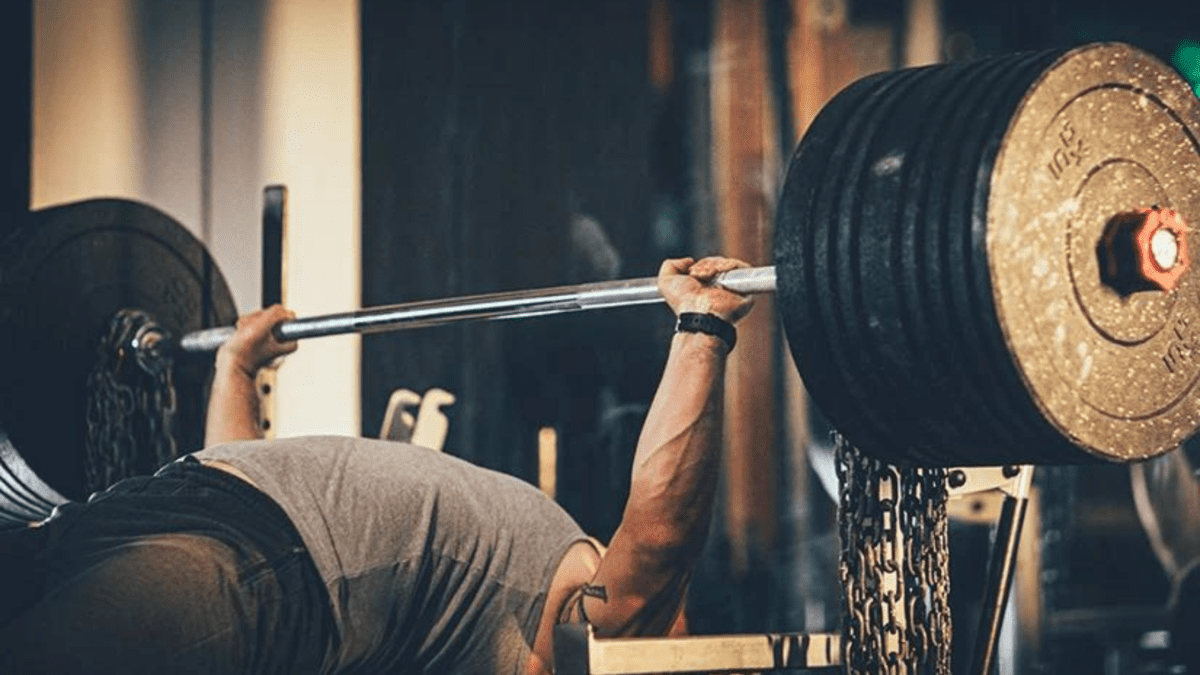Hypertrophy Training
Hypertrophy training ,so now you understand those differences, you’re starting to get an idea of how you train for strength and power: you use heavier weights and you per-form fewer repetitions to create lots of microtears.
But this…
…is to go…
…even further…
…BEYOND!
Because actually, there’s a lot more to it than that!

hypertrophy training
Functional Strength – hypertrophy training
The first thing to consider is that lifting for pure power will always need to involve training for functional strength primarily. In turn, this means that you’re lifting very heavy weights through larger ranges of motion that incor-porate lots of muscles into one clean and smooth movement.
Examples of ‘compound’ lifts include the squat, the deadlift and the bench press. In each case, all the muscles are working together in unison in order to drive the weight. This means you’re using your legs, your core, your lower back and your arms all at the same time and it means that technique is going to be much more important.
These moves are called ‘functional’ because they mimic the way that you use your body in the real world. In real life, we very rarely use any move-ments that only utilize one muscle group on its own. When you perform a bicep curl, you’ll move the weight through a set range of motion and the only ‘pivot point’ will be your elbow. There are very few scenarios quite like this outside of the gym.
Conversely, performing a deadlift means coordinating your whole body,which is also what happens when you push your sofa during redecorating,when you wrestle and when you open the garage door. Therefore, it is con-sidered more ‘functional strenght’.

These kinds of compound, functional movements are also favored by many people thanks to their ability to stimulate more anabolic compounds. Dead-lifting and squatting both result in the release of more growth hormone and more testosterone and the simple reason for this is that they incorporate more muscles and more of the larger muscles.
This is true to the point that some people claim you can’t build big muscle without using compound movements. This isn’t true as we’ll see… but cer-tainly compound lifts are great for inciting more growth.
hypertrophy training
Muscle Fiber Types – Hypertrophy Training
There’s another factor to consider when lifting very heavy weights and an-other reason that you need the heaviest weights in order to stimulate the most strength.
And this has to do with ‘fast twitch’ and ‘slow twitch’ muscle fiber types.
Fast twitch muscle fibers are the muscle fibers that we use for explosive movements. These rely on glycogen stored in the muscles in order to oper-ate and they are capable of exerting much more force compared with slow twitch fibers.
At the same time though, fast twitch muscle fibers also wear out faster and aren’t as energy efficient. A long distance runner then will have more slow twitch muscle fiber, while a powerlifter or a sprinter will have more fast twitch muscle fiber.
Anatomically, this is because fast twitch muscle fibers have more stored glycogen and fewer mitochondria. Mitochondria are what convert glucose from the blood into ATP using the aerobic system. Conversely, glycogen is available for immediate use, though stores are depleted very quickly.
The body will always use the most efficient combination of muscle fibers possible to get the job done. You can’t ‘half’ use a muscle fiber, they are binary in nature. That means each muscle fiber either kicks in, or it doesn’t.
If you lift something light then, your body will likely use a couple of fast twitch fibers but a lot more slow twitch muscle. This will allow you to curl for longer but it means you won’t be tearing/stimulating the fast twitch fibers that give you that maximum strength.
Conversely, when you lift something very heavy though, the muscles will be forced to recruit more fast twitch muscle fiber just to shift that weight.
Therefore, you’ll eventually tear the fast twitch fibers, thus resulting in the stimulation you need to trigger growth. So you really do need to lift heavy in order to engage the fastest twitch muscle fibers.
Individual Differences (hypertrophy training)
This is where individual differences start to come into play though. Because actually, some people have more fast twitch muscle fiber genetically, while others have more slow twitch. This immediately impacts on the type of training they are going to respond best to.
People with more fast twitch muscle fiber might be particularly adept at lifting heavy weights and might find this leads to rapid hypertrophy. On the other hand, those who have a lot more slow twitch fiber, will often find that they actually respond a lot better when they lighten their load and start lifting lighter weights!

hypertrophy training
The Role of the Central Nervous System (hypertrophy training)
Also very important to understand is the role of the central nervous system and the brain.
And this is how someone like Bruce Lee – who was actually still rather thing – can be capable of doing incredible things like holding a 40kg barbell at arm’s length.
Because in order to utilize your muscle at any point, you first need to send the relevant signals from your brain. Those signals then need to travel through your central nervous system and they need to reach the muscles by crossing the point called the ‘neuromuscular junction’.
When they reach this point, a signal is sent across using the chemical acetylcholine and a small electrical impulse called an ‘action potential’. When that signal is strong enough, it is able to cause the fibers it comes into contact with to fire.
If the signal isn’t strong enough, then a lower proportion of the muscle fibers will fire even though you might need to engage more of them to lift the weight.
What does this tell us?
It tells us that the brain might just be the bottleneck in some cases, not the muscle itself.

(hypertrophy training – best body building workouts)
And actually, this is always the case. When you attempt to lift a truly heavy weight, you’ll find that the most you can possibly recruit – even as a trained athlete – is up to 50% of your muscle fiber.
And if you’re not a trained athlete? Then you’re looking at much closer to 30% in most cases.
So with the best will in the world, you’re only going to be able to engage up to 50% of your maximum strength at any one time! And this strength is also going to be highly dependent on your tiredness and other factors.
At this point, you might be wondering why muscle fiber recruitment is so low. Why wouldn’t we be able to engage all our muscle in one go?
But the answer comes down to evolution. In the wild, if we were to engage 100% of our fast twitch muscle fiber to the point that it fatigued, then we’d be left with zero energy left to engage.
As a result, we’d then be completely ‘spend’ if we were to need that muscle later on. Imagine if you saw a preda tor and you had completely exhausted all of your muscle power! Imagine not even being able to crawl to find food!
And then there’s the very distinct possibility that you could end up causing injury to yourself without any limit on your strength. You’d probably end up dislocating your own joints every time you moved!
And thus, we can only engage a proportion of our muscle mass…
Unless..
hypertrophy training best body building workouts
The Mind Muscle Connection (hypertrophy training)
Simply by training with the heaviest weights possible, you are going to find that you immediately increase your ‘mind–muscle connection’. That’s because you’re going to be at least trying to engage as much muscle as possible.
And the law of SAID (Specific Adaptations to Imposed Demands) tells us that this would then make us better at recruiting that muscle in future.
But you can also engage muscle muscle fiber in some other ways. One method is to use something called overbearing isometrics. An ‘isometric’exercise is anything that involves contracting the muscle without moving it – a ‘static hold’. Normally, this means holding a weight until you can’t hold it
any more and you slowly let it drop.
When your aim is to increase the mind muscle connection though, you can do this another way by pulling or pushing against an immovable force. Bruce Lee used to do this by chaining a barbell to the floor and then trying to squat or curl it. This is the equivalent of trying to lift 100% of your 1 rep maximum (the most weight you can move for one repetition) and as far as your body is concerned, there is zero difference!
Another way to build the mind–muscle connection is to practice contracting the muscle and really focussing on it – both during exercises and straight after.
If you watch strength athletes on YouTube, they’ll often contract their muscles and pull a pose straight after lifting. That’s not (just) vanity – it’s also to help enforce that connection.
This is also why it’s so important not to just let your mind wander during your training.
hypertrophy training
Hysterical Strength (hypertrophy training)
If you wanted to go beyond even powerlifting–strength and see what it’s like to experience the kind of strength that’s almost superhuman, then you may be interested in stories of ‘hysterical strength’.
Hysterical strength is a term that describes the superhuman strength some people experience when they are in extreme danger. When you hear stories of mothers lifting cars off of their children, that’s an example of hysterical strength. Another famous story involves a rock climber lifting a rock off of themselves in excess of 300KG.
How is this possible? Well, while these are just urban myths, studies suggest that the right neurochemistry can in fact allow us to override the ‘safety switch’ in our brain and tap into untold power – recruiting up to 100% of our muscle mass.
Studies show that adrenaline plays a role in this and that simply tricks like shouting during lifting can create a slight surge in this to allow you to lift heavier.
Of course this is kind of annoying for everyone else in the gym though…
hypertrophy training
Practice Makes Perfect (hypertrophy training)
Note that the mind–muscle connection is also what we refer to as ‘technique’. When you have good technique, it’s because you have strength ened connections in the brain corresponding to very precise and specific movements in the body.
You’re constantly using particular neural networks in your motor cortex and this is in turn going to strengthen those connections and help you to better control your body when performing those precise movements.
Not only will this result in better muscle fiber recruitment but it will also help you to more effectively perform the technique, thereby avoiding any wasted energy that might come from overbalancing or otherwise just not performing as well as you might.
